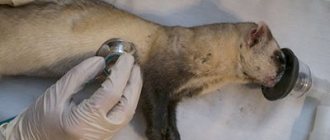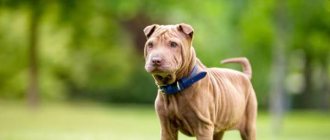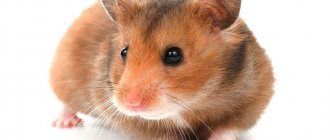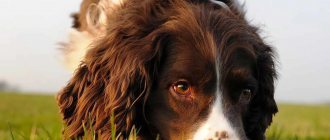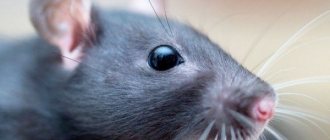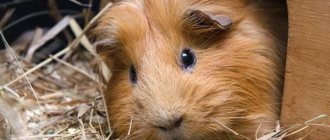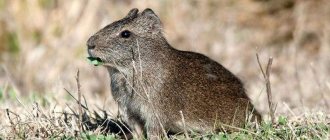For most people, companionship with pets is essential. A little (or not so) defenseless friend demands warmth and care from the owner, looks with smart eyes and understands everything. Do you think we're talking about dogs that fit this description exactly? No, for many people (especially in a small city apartment) a dog is an unaffordable luxury. In addition, such a faithful four-legged friend needs long walks and outdoor activities.
Then maybe get a beautiful and graceful cat? But these beauties are sometimes too capricious. You can have birds or fish, but not everyone can appreciate communicating with them. A guinea pig at home (reviews from the owners confirm this) is a cute and loyal little friend. In this article we will tell you how to properly keep these animals, how to care for them, and how to choose the right charming pet.
According to reviews from owners, guinea pigs do not require large financial costs or complex care. These are smart, playful and very cheerful animals. They will not refuse to “talk” to their owner: the sounds they make, similar to birds chirping or the sound of water in a boiling kettle, are characteristic of the animal’s different moods. They also love to sit in their owner’s arms, burying their pink nose in his palm.
Distribution in natural conditions
Domestic guinea pigs are descended from a wild animal that lives in South America. The fairly numerous genus Cavia includes several small rodents that are very similar in appearance, which in Europe are called guinea pigs or guinea pigs, and in their homeland they are called gooi or aparea.
Wild guinea pigs have a slimmer body and are very active. Rodents in natural conditions are colored black, brown, gray or brown. The overwhelming majority of species dig holes and create shelters, which are entire underground towns. These rodents live in small colonies, each of them occupies its own territory and the adult male is the leader in it.
What and how to feed
The second very important thing for a pig’s longevity is proper nutrition. If you really want to take good care of your boar, be prepared to spend a significant amount on food. Remember that in nature, pigs consume more than 40 different types of herbs, vegetables or fruits every day; such a wide range allows them to receive all the necessary vitamins for full functioning and health. Based on this, we can conclude that the more varied food you can provide your pigs with, the better.
The entire diet of a guinea pig consists of several components:
- Hay;
- Fresh food, which includes grass, vegetables and fruits;
- Dry grain mixtures;
- Water.
It is advisable that all parts of the specified diet be present every day. Hay should always be in the hay barn, since for guinea pigs it not only serves as bread, but also helps to grind down the animals’ teeth, keeping them in good condition. With a lack of hay, the teeth do not grind down, grow strongly and lead to various injuries and diseases. Hay is inexpensive and can be purchased at any pet store. The cheapest will cost 50 rubles for a pack of 20 liters, which is enough for one pig for about a week.
You need just a little bit of dry grain mixtures - literally one or two tablespoons for the whole day for one individual. It is advisable to purchase good and expensive food, especially since one pack will last for a long time. If finances do not allow, then you can completely abandon this part of the diet.
Fresh food must be present and form the bulk of the diet.
Inexpensive foods include carrots, raw beets, cabbage, Chinese salad, and some fruits such as apples. In general, the list of products is very large, but there is also a considerable list of prohibited foods. Before you try to give anything to your pig, it is better to search for this product online and find out whether it can be given to your pig and in what quantities.
Why are animals called marine?
We are sure that most guinea pig owners do not know the answer to this question. Reviews from owners of these animals indicate that this issue is of interest to many. Unfortunately, even zoologists do not have an answer to this: there are only assumptions. Most experts are inclined to believe that the name is associated with the special gurgling sounds that these animals make. And sometimes they actually resemble the squealing of piglets.
If you look at the skeleton of a guinea pig, you will notice the similar proportions of the body and head, as well as the density of the neck. In one of the dialects of Germany, these animals are called dolphins because of the sounds they make. There is another, rather controversial version: the small animals were called sea creatures because they could, like real pigs, survive on sea ships in small pens.
Cavias or guinea pigs are cute animals, by whose behavior and habits you can understand what their mood and well-being are, and whether they are full. It is not uncommon for breeders to keep several guinea pigs. Their reviews suggest that the animals differ in character: some are calmer, others are active, and others are shy. Today, these animals are so popular that even in modern dream books interpretations of dreams with the participation of cavy have appeared: a light pig dreams of joy, and a black pig - of future troubles.
Housing
It is very important for guinea pigs to live in comfortable conditions. In the wild, they have vast territories in their possession; they love to run around and stretch their bones, which, unfortunately, is impossible to do in a cramped cage. If you want your beloved “piggy” to live many happy years, then first provide her with housing. You have two options:
Option one is to buy a suitable cage. Pigs are accustomed to living, so to speak, in two-dimensional space, that is, height is not so important for them. The most important thing is that the cage has a suitable area. Pigs are quite clean and like to share space, their toilet is in one place, their place for food is in another, and they sleep in a third, although not all individuals can boast of such organization.
The minimum cage size for one guinea pig is 100 cm on one side.
Of course, this figure is rounded; if the model you find is slightly larger or smaller, that’s okay. If you have a couple living with you, then the cage should not be less than 120 cm. Starting from three pigs, the cage area should increase by half a square meter.
Option two is organizing an enclosure. This option is good because you can make a suitable enclosure yourself. You can even use cardboard for its walls, although it is not advisable. The pigs are not so jumpy that they can overcome it, but they are strong enough to pry the cardboard with their nose or completely demolish the walls by sneaking out. The best option is wooden or plastic partitions. They are more resistant to moisture and sit better on the ground.
Many people use fences for flower beds and lawns as pen walls. They are easy to assemble, expand, and all sections are interconnected. The only drawback is the legs, which are stuck into the ground, but they can always be sawed off or detached.
External features
The body length of an adult guinea pig ranges from 25 to 35 cm (depending on the breed). These rodents do not have a tail. Thoroughbred individuals have drooping ears and a wide, blunt muzzle. A male guinea pig weighs from a kilogram to one and a half, and a female - from 800 grams to 1.2 kg.
Today, many breeds have been bred that differ in the length, structure and color of their coat. Breeds of guinea pigs (domestic) are divided into groups:
- short-haired (Crested, Smooth-haired, Selfie);
- longhaired (Texel, Sheltie, Merino, Peruvian, Rosette);
- Wire-haired (American Teddy, Rex, Abyssinian);
- breeds are hairless and with a small amount of wool (skinny, baldwin).
The body of domestic pigs differs from their wild counterparts in having more rounded shapes.
Guinea pig breeds with photos
Guinea pigs are quite popular pets, so recently many new breeds have been artificially bred. The most popular include:
Alpaca
The breed is characterized by the presence of thick, beautiful, curly and long hair. These pigs have two rosettes located on the back, and one, which has an irregular shape, within the forehead. In the area of the muzzle, the hairs grow so that they form a kind of sideburns. On the legs, hair grows from bottom to top.
Texel
The breed is characterized by the presence of beautiful curly hair, which in appearance is similar to a wet perm. Due to its unique and attractive coat, the breed is very popular both here and abroad.
Abyssinian
It is considered one of the oldest and most beautiful breeds. This breed has a hard coat, and also has several rosettes consisting of fairly long hairs. Such pets have an excellent appetite, and the animals themselves are characterized as very active.
Merino
The breed is characterized by a number of characteristics, including large eyes and ears, as well as a short head and a strong, compact body. The breed has long and curly hair, developed cheeks and pronounced sideburns. A symmetrical and small “crown” can be seen on the animal’s head.
Peruvian
The breed has a long and very attractive coat that does not require any special grooming process. To prevent too long coats from becoming too dirty, guinea pig owners use special papilettes for this.
Rex
It is a variety of short-haired breeds with a coat of a special structure. As a result, the guinea pig resembles a small, living plush toy. The hair on the back and head is coarser than on the rest of the body.
Cornet
This breed has other names, such as “crested” or “wearing a crown”, which is associated with the presence of a peculiar crown between the ears of the animal, formed by a special rosette. The coat is long and evenly distributed throughout the body. The Cornet breed was born as a result of crossing the Sheltie and Crested breeds.
Sheltie
The breed has long and straight hairs with a silky shine. In the head area there is a kind of mane that falls over the shoulders and onto the back of the animal. Animals are born with short hair, and already in six months they have a full coat of hair.
Interesting to know! Baldwin guinea pigs have a very exotic and unusual appearance because they have no fur. On the animal's knees you can see several medium-length hairs.
The most popular breed among short-haired guinea pig breeds is the Self breed. This breed has a solid color, and the number of colors is amazing. With the slightest movements of the animal, many tones are reflected, which creates unique color tints.
PROS and CONS of keeping GUINEA PIGS / SvinkiShow
Keeping a guinea pig at home, reviews from owners
If you are too busy at work and cannot devote enough time to your pet, then we advise you to pay attention to these charming animals. Judging by the reviews, caring for and maintaining guinea pigs will not take too much time - a maximum of four hours a week. This time is distributed as follows:
- The animals are fed two to three times a day;
- Once a day you should open the cage to ventilate it;
- the litter needs to be changed every 3-4 days;
- every 3-4 days the pig is examined (to see if there are any scars on the pet’s body, if there is an uninvited guest in the fur);
- furry individuals are combed once every three days;
- Once a week they carry out general cleaning of the cage;
- Nails are trimmed twice a year.
Description of the guinea pig
Zoologists note that according to taxonomy, guinea pigs should be classified as part of the family of semi-ungulate rodents, while they have a characteristic appearance and a special structure.
Appearance
It is believed that the body structure of guinea pigs is similar in basic anatomical data to most domestic animals. There are some differences noted:
- Guinea pigs have a cylindrical body. The body length does not exceed 22 centimeters, although individuals of greater length are found.
- The animal's spine consists of seven cervical, twelve thoracic, six lumbar, four sacral and seven caudal vertebrae.
- The guinea pig lacks a tail and does not have collarbones as such.
- Males, compared to females, weigh slightly more, with adults weighing from 0.7 to 1.8 kilograms.
- Guinea pigs have fairly short legs, with the front legs being much shorter than the back legs.
- The front paws have 4 toes, and the hind paws have 3. The appearance of the toes more closely resembles small hooves.
- In one week, the size of the animals’ fur increases by almost half a centimeter.
- In the sacral area of pigs there are sebaceous glands, and within the genitals and anus there are paranal glands that secrete a special secretion.
- The guinea pig's head is relatively large, with a well-developed brain.
- An animal's incisors grow throughout its life, at a rate of up to 1.5 millimeters per week.
- The lower jaw of guinea pigs is capable of moving in any direction.
- The intestines are long enough and exceed the size of the animal’s body, so food can be digested for a whole week.
Animals can have different colors, structure and length of hair, which is associated with the main natural features, therefore, there are individuals with fairly short, very long, straight or wavy hair.
Behavior and lifestyle
Being in natural conditions, wild guinea pigs prefer to be active both at sunrise and at dusk. Despite their size, the animals run quite quickly and are considered very agile, always on the alert.
The wild guinea pig lives both in forests and in mountainous areas. To arrange their nest, they look for quiet, secluded places, but they do not dig holes. To form their home, they use dry grass, fluff and thin branches of trees and shrubs.
Interesting moment! Decorative guinea pigs are used not only as cute creatures that decorate a person’s home, but are also kept at various research institutions as experimental animals.
Wild animals are quite social, so they live in the same territory with many of their relatives. Each flock has several males, at the rate of one male for a couple of dozen females. The animals are quite active, so keeping them at home requires sufficient walking space. Pets rest (sleep) more than once a day, often with their eyes open.
How long does a guinea pig live?
Being in the natural environment, wild guinea pigs can live no more than 7 years, and at home, if all rules and regulations are followed, 2 times longer.
Guinea pig - All about the rodent species | Type of rodent - Guinea pig
Behavior
The psychology of these cute rodents does not imply a division of temperaments (as in humans) into types. Among them there are “alphas” and “betas”. In other words, natural leaders and individuals who obey them. For this reason, when you go to get a friend for your pet, take him with you. Otherwise, you may acquire for him the same leader as himself, in which case fights and skirmishes are inevitable.
There is an opinion that male guinea pigs cannot coexist peacefully. Owner reviews refute this version. In these animals, communication with relatives is not based on gender. On the contrary, they need to live precisely in a society of representatives of the same sex. Many animal lovers are interested in, do guinea pigs bite? Reviews from owners answer this question in the affirmative. Thus, the pig expresses its dissatisfaction or communicates its needs. This is completely normal behavior and a natural reaction of a rodent to what is happening around it.
Guinea pig age chart by human standards
Pigs develop very quickly. In approximate proportions, a pet’s life year is equal to 10–15 years of its owner’s life. You can find out how old your pet is by human standards from the table.
| Pig age | 2 weeks | 6 months | 2 years | 5 years | 7 years |
| Human age | 6 months | 6.5 years | 26 years | 65 years old | 91 years old |
The given values are average values. The estimated period is 13 years. The exact ratio for a particular pet is calculated based on individual parameters.
Housing for a pet
Guinea pigs are kept in fairly spacious cages, which should be well ventilated, but at the same time protect the animal from drafts. A layer of sawdust about three centimeters thick is laid on the floor of the cage. Choose sawdust that is not too small; it should not get into the animal’s respiratory tract. Sawdust should be changed regularly. If this is not done, not only they, but also your pet may develop an unpleasant odor.
Observe which part of the cage the pig has allocated for the “toilet”, and place another container with sawdust there. If you clean it daily, the entire cage can be cleaned less frequently. The cage should be installed in a bright, warm and draft-free place. It is not recommended to place it near heating devices or in direct sunlight.
In the cage it is necessary to install a feeder, a drinking bowl and a resting house for your pet.
Choosing and arranging a home
For a Peruvian guinea pig, you need to purchase a spacious cage, terrarium or enclosure.
All equipment must be durable and reliable so that food does not spill or water spills. In a spacious cage, you can equip a separate toilet, because pigs like to go to one place. This simplifies the cleaning that needs to be done daily.
It is best to place the cage in well-lit areas.
Keeping animals in a dark corner of the room has an adverse effect on the health and behavior of the rodent, so breeders are urged to place the cage near a window. However, in this case, drafts, which are destructive for Peruvians, should be carefully avoided.
It is very important that the place to sleep is comfortable. It is not recommended to buy houses, because pigs can hide there and become unsociable. It is better to choose a hammock or tunnel made of soft material.
Bathing
How should a guinea pig be cared for? Feedback from owners suggests that the animal periodically requires bathing. Your pet does not get much pleasure from it. Despite the fact that the rodent is called a marine rodent, swimming is not the most unpleasant experience. If the owner believes that the time has come to engage in water procedures, they should be approached very carefully. The water temperature for bathing a baby should not be higher than +38°C.
If your pig's fur is matted or very dirty, you can use a softening baby shampoo. After bathing, dry your pet with a towel, otherwise he may get sick. Animals with long hair can be dried with a hairdryer and warm air.
Where and how to buy a guinea pig
As a rule, show and breeding class animals are the most expensive, since they are the ones who participate in exhibition shows and are the basis of any nursery or breeder. Pet-class pets are inexpensive and accessible to citizens of any category.
The cost of animals includes various factors, such as gender, quality, color, and origin. Imported animals cost at least 15 thousand rubles, since transportation is not cheap at all. Regardless of origin, the pig must be absolutely healthy, well-fed and very active. The eyes and nose should be clean, and the coat should be well-groomed, without scratches or bald spots.
Nail care
The owner can trim his guinea pig's claws himself. Reviews from breeders and advice from veterinarians do not recommend this for beginners who do not have experience with these animals. It is better to seek help from specialists. There are many breeds of pigs. In animals with light fur, it is easier to trim their claws: the border of the claw is clearly visible. This should only be the very tip. Otherwise, you may injure the animal. After this you need to use a nail file.
Main causes of bites
Aggression by a guinea pig or any other animal is never without reason. If the owner does not see or understand such a reason, this does not mean that it does not exist. Another thing is that it is not at all necessary to delve deeply into the motivational factors of a pet’s behavior, trying on the role of a home-grown psychologist, veterinarian or trainer.
Important! All the reasons in the world why a guinea pig begins to bite a person can, in the vast majority of cases, be formulated in one phrase: the animal does not want to be touched.
By recognizing the animal’s right to have its own opinion about the prospect of being in the arms of the “owner” (whom it may not consider as such at all), to be caressed or to participate in the game offered to it, the pet owner will solve many problems for himself once and for all.
Invasion of personal space
Konrad Zacharis Lorenz, a famous Austrian zoopsychologist, Nobel Prize laureate in the field of physiology and medicine, in his famous book “Aggression” convincingly proves that the manifestation of hostility in animals, especially school animals, is directly related to such a concept as an individual safe distance.
Find out what nickname to give your guinea pig.
For those animals that lead a solitary lifestyle, the need for protection of personal space is not so great. But the guinea pig is a school animal. In the wild, such rodents form families uniting 1–2 dozen females around one male. Each such family occupies a certain area of territory and strictly protects it from strangers. It is this last point that is the determining factor in understanding the most likely reason why a pet rodent bites. Those animals that do not tend to defend their territory, in times of danger, on the contrary, try to cluster in groups as tightly as possible (the most striking example of this behavior can be observed in schooling fish).
A guinea pig, defending its space, may well bite a person to the point of drawing blood, and the animal is much more likely to do this if the owner’s hand invades the cage that the animal considers its home than in case of unexpected and unwanted contact during a free walk (in the latter case the pet will most likely try to escape and hide in a safe place).
Psychological characteristics
It can be difficult for a person to believe this, but animals differ from each other not only in breed, size and color, but also in character.
Important! If one guinea pig behaves affably and friendly, and the second does not allow itself to be controlled under any pretext and avoids contact in every possible way, especially physical contact, this can be explained solely by the individual characteristics of a particular individual.
To count on the fact that the character of an animal can be corrected by something like “re-education” is at least naive, at most arrogant, so the smartest thing you can do is to accept the situation as it is and simply come to terms with objective reality.
Feeling discomfort or pain
Unfortunately, guinea pigs are most likely to bite children. However, before you rush to punish the animal for causing pain to the baby, it is worth thinking about the reasons for this pattern. Perhaps the child, wanting to play with the fluffy ball or caress it, frightened the animal with his active pressure (literally and figuratively), pressed it too hard and, due to age characteristics and psychological immaturity, did not respond in a timely manner to those obvious warning signals that were sent to him in response.
Did you know? The answer to the question why an animal that has never seen the sea and is definitely not a waterfowl is called a marine animal is actually very simple. It turns out that guinea pigs were brought to Europe from South America and were initially called “overseas”, but gradually the additional prefix was no longer pronounced.
If this is so, the unfair punishment to which the animal will be subjected will not only not correct the situation, but will also aggravate it: the rodent will steadily associate the interest of a particular small person in himself with pain, discomfort, danger and, accordingly, react to this factor with aggression even in in the event that the baby shows maximum tact and caution.
Diseases
Illness may also be the cause of guinea pig aggression. True, in this case, in addition to the emerging habit of biting, the rodent will show other signs of ill health: loss of appetite, changes in behavior, passivity, falling out fur, digestive disorders, etc.
We advise you to find out whether a guinea pig can eat kiwi.
Diseases of guinea pigs, methods of their diagnosis and treatment are a topic for a separate discussion. If an animal begins to bite “out of the blue,” you need to observe it more carefully and, if necessary, show the animal to a good veterinarian. This is especially important if the bites occur after touching a specific place on the rodent's body, for example, the stomach or paw - perhaps this is the area where the source of the problem should be looked for.
Feeding
The herbivore guinea pig, reviews of which can be read in our article, prefers fresh grass of all foods. At the same time, hay should always be in the pig's feeder, even if you pamper it with its favorite treat. The fact is that when eating hay, the animal develops a correct bite, grinding down the incisors, which in these rodents grow throughout their lives.
When purchasing hay at a pet store, pay attention to its smell and color: fresh hay has a light “summer” aroma of cut grass and it is usually green in color. If you smell rotten or notice a yellowish-brown color, do not purchase.
Among vegetables, guinea pigs undoubtedly prefer carrots. When giving your animal a favorite root vegetable, rinse it thoroughly with warm water. Cute rodents will not refuse:
- pears;
- beets;
- dill;
- parsley;
- apples;
- pumpkins;
- Chinese cabbage;
- bananas;
- corn leaves;
- salad;
- bell pepper;
- cucumbers;
- watermelon rinds.
Citrus fruits (tangerines, tangerine peel, oranges) are strictly prohibited for guinea pigs. The pig should be fed at the same time every day. Some breeders recommend feeding their pets 2-3 times a day. But, since rodents eat often and little by little, in the morning you can put the daily amount of green food and grain into the feeder, adding hay during the day as needed. Grain makes up a third of the animal's daily diet. Owners should remember that its abuse can lead to obesity in the pig.
Minerals and vitamins are essential for guinea pigs. Reviews from breeders indicate that you can replenish their supply by buying her a mineral stone and a salt wheel. The animal will come up and bite off a piece of them when the body needs table salt or minerals.
Factors influencing life expectancy
The lifespan of guinea pigs at home is influenced by a whole range of different factors. These include:
- breed of animal;
- content;
- care;
- heredity;
- nutrition;
- health status.
Each of these factors affects the lifespan of guinea pigs to varying degrees, but they should all be taken into account.
Breed influence
Breed affects the life expectancy of an animal less than other factors. This parameter rather allows the pet owner to determine the initially set deadline. Compared to other rodents, pigs live a long time. But representatives of some breeds, according to generalized data, live twice as long as others. Therefore, it is important to know which category your pet belongs to.
Varieties formed naturally (i.e., in natural conditions) are more durable than those bred artificially (by selection). This is due to the fact that natural selection operates in nature - the survival of the fittest.
There are fifty different breeds of guinea pigs in total. They differ in size, color options and other characteristics. They can be divided into three main groups:
- hairless;
- short-haired;
- long-haired.
Hairless or hairless guinea pigs have the shortest lifespan of all varieties. On average, they live 5 years, but with proper maintenance this period can be extended to 8 years (maximum). This category includes the Skinny breed, as well as the equally common Baldwin. These hypoallergenic varieties appeared through the efforts of breeders. They are completely devoid of fur, as a result of which they easily catch colds. Initially, they lived as long as hamsters, but breeders improved the bred variety, thanks to which hairless pigs got a longer life.
Short-haired breeds, on the contrary, have the longest lifespan. On average, these guinea pigs live to be 7–8 years old. These varieties include:
- American;
- American Teddy;
- Himalayan;
- royal, aka Rex;
- crested;
- texel.
Long-haired pigs live on average 6-7 years, but with proper care they can live longer. Breeds included in this category are:
- sheltie, also known as silkie or snare;
- rosette, also known as Abyssinian;
- Peruvian;
- Coronet
When approximately calculating the time allotted to a pet, you cannot focus only on its breed. There are other factors to consider as well.
Conditions of detention
Keeping an animal at home should not be a “prison” in a cage. In order for your pet to live a long life, you need to provide him with a comfortable existence and sufficient physical activity.
The pet's house should be spacious, the desired size is 40x30 cm per animal. The animal's housing needs to be kept clean - regularly cleaned, changed filler and bedding (they should be chosen of high quality).
In addition to the house, the pet should have an area for entertainment, equipped with tunnels and other toys that will allow the animal not to get bored and not become overgrown with excess fat from lack of exercise. From time to time it is worth letting your pet out for a walk and run around a large area - on the street or at least in the rooms of the house.
There should be no drafts in the room where the animal is kept. The air temperature around the pet should be +18–22 °C. Hairless (hairless) pigs need to be kept in an environment with a higher air temperature - the required value is +22–24 °C.
Care
In order for the animal to be healthy and live as long as possible, you need to follow the rules of caring for it. It is necessary to monitor the length of teeth and claws. In order for your pet to grind them down as needed, you need to install a special mineral stone in the cage. Too long teeth will not allow the animal to eat, which will lead to exhaustion and then death. If the pet does not have time to grind down the excess length of the teeth on its own, it will be ground down by a veterinarian. Long claws can be trimmed at home using a nail clipper.
You should regularly check your pet's eyes and ears. If contamination is detected, they must be carefully cleaned. In addition, it is important to take care of your pet’s fur (especially long-haired ones), combing it regularly, preventing it from becoming matted.
You should not bathe the animal often - only when necessary. During and after washing, the animal should be protected from cool air and drafts. It is better to use hypoallergenic shampoo. Bathing water should be warm. After the water procedure, you need to dry your pet's fur with a hairdryer or towel. You cannot leave the fur coat wet - this will lead to hypothermia and the pig will get sick.
Received heredity
This factor cannot be changed; it can only be accepted. If a pet is diagnosed with a genetic disease, all that remains is to love the poor animal as it is. And try to make him happy, despite the illness.
It is believed that diseases transmitted at the genetic level are much less common in short-haired pigs than in hairless and long-haired pigs.
Nutrition composition
The life of an animal is connected with its nutrition. Your little pet should not go hungry. This is due not so much to a lack of nutrients, but to the lack of peristalsis in the pig. The peculiarity of the animal’s body is such that in order for the digested food to be released, the rodent must continue to eat, i.e., only new food can remove processed food from the intestines - each next eaten piece pushes the previous one through the gastrointestinal tract.
You can’t leave him without food, but you shouldn’t overfeed him either. Like all domesticated rodents, domestic guinea pigs are susceptible to obesity.
It is important to create a menu correctly so that your pet receives all the necessary elements in sufficient quantities. Daily nutrition should be shaped so that foods are distributed in the following proportions:
- 60% – high-quality special feed;
- 20% – vegetables and fruits;
- 20% – branches of fruit trees, hay, crackers.
In addition, special mineral and vitamin supplements are necessary for the health of the animal (this is especially true for preparations with vitamin C). We must not forget about drinking; your pet should always have free access to clean, fresh water.
General health
Pigs have strong immunity, but this does not mean that they do not get sick. It is important to monitor any changes in your pet’s behavior and appearance - all this signals a disease.
If any deviations from the pet’s usual condition are detected (for example, the animal itches, coughs, becomes lethargic, shreds fall out of its coat, etc.), you should immediately show the pet to a veterinarian. Diseases are well treated only in the early stages; advanced disease leads to the death of the animal.
It is also worth considering that not all diseases make themselves felt immediately. Therefore, to maintain health, it is better for the animal to be regularly examined by a veterinarian and receive the necessary vaccinations and vaccinations.
